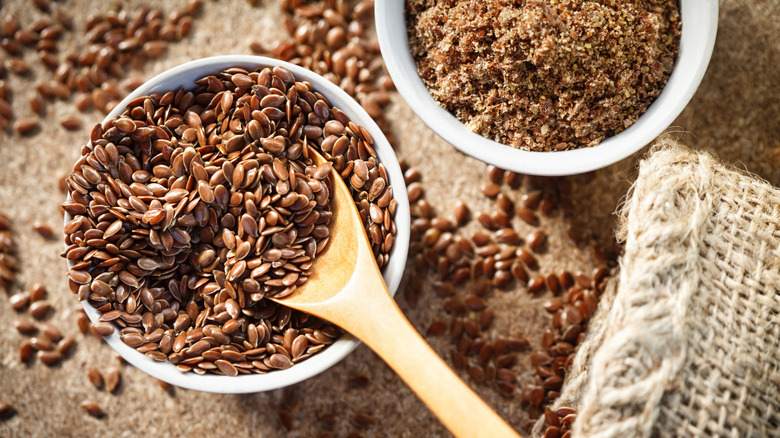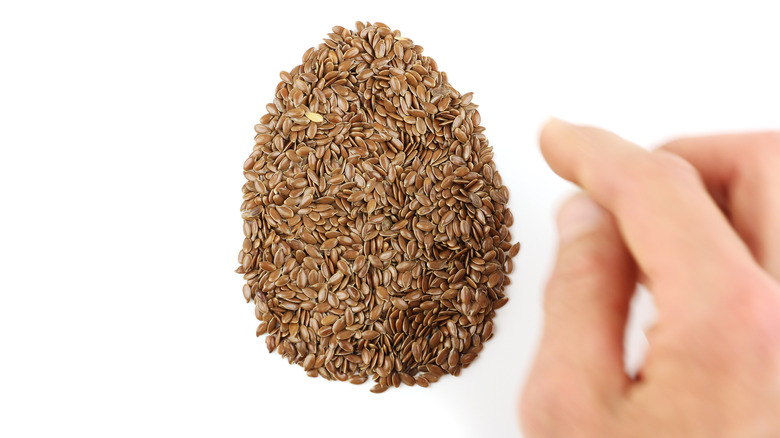Flax Is The Egg Substitute You May Not Have Thought Of
We may receive a commission on purchases made from links.
Time was when only vegans needed egg substitutes. But with crazy soaring egg prices, we can all benefit from knowing a few alternatives. According to the U.S. Bureau of Labor Statistics, the average price of this former staple of budget cooking is now up to $4.25 a dozen. But prices can soar far beyond that. According to Today, some consumers are paying up to $1 an egg.
While many of us think of eggs as a food that has no substitute, that is in fact not the case. There are many substitutes for eggs, and different ones are better suited to different situations. Use seasoned tofu to simulate scrambled eggs for example (per BBC Food). Or, if you're really craving that eggy flavor, go for vegan eggs like JUST Egg, which really make the perfect egg substitute for scrambled eggs, frittatas, or even quiches.
However convenient and flavorful products like JUST Egg or Simply Eggless might be, they're not a perfect substitute for baking. While according to Planted 365 you can use JUST Egg for baking, it doesn't give much rise and is not ideal for recipes that require that, like breads. Additionally, prepared vegan egg products are expensive compared to other egg substitutes, which will cost you pennies on the dollar for the most part. At $4.19 for 12 ounces, JUST Egg is comparable in price to real eggs.
An egg substitute for baking
There are plenty of egg substitutes out there. But one that's especially well suited to baking is flax. This substitute is sometimes even called a flax egg (per Simply Recipes). Now don't just go throwing some flax seeds in your cake mix and call it "done." There is a bit of a process to it.
Start with one tablespoon of whole flax seeds and three tablespoons of water, divided, per egg, says The Kitchn. First off, you have to grind the flax seeds. It's not as hard as it sounds; you can use a coffee grinder, a spice mill, or even a Magic Bullet (per New York Times). Or you can go for pre-ground flax. If using the pre-ground variety, the ratios are a little different. For pre-ground flax, use two and a half teaspoons of flax to three tablespoons of water.
Whichever flax you use, once it's ground, combine it with the water using a fork and mix well. Allow the mixture to sit for seven to ten minutes or up to an hour. Once set, it should have a thick texture similar to egg whites. This is due to a gum found in the outer coating of the seeds that you've loosened up by grinding them. Your flax egg is now ready to use. While it's great for baking, we don't recommend trying to make a flax egg omelet. Yuck.

